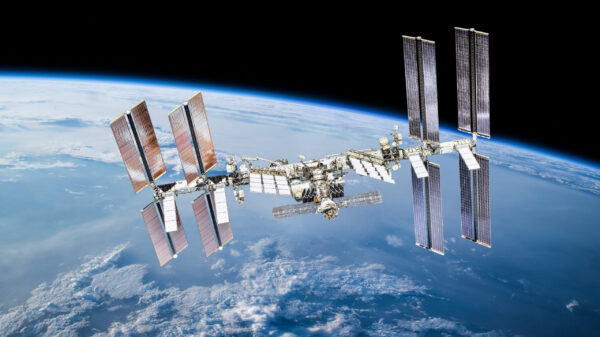By Brandon Moseley
Alabama Political Reporter
In a statement on Wednesday, the U.S. National Aeronautical and Space Administration (NASA) announced that astronomers using data from three of NASA’s space telescopes — Hubble, Spitzer and Kepler have discovered clear skies and steamy water vapor on a gaseous planet outside our solar system. According to NASA scientists, the planet is about the size of Neptune, making it the smallest planet from which molecules of any kind have been detected.
The assistant administrator of NASA’s Science Mission Directorate in Washington, John Grunsfield said in a statement, “This discovery is a significant milepost on the road to eventually analyzing the atmospheric composition of smaller, rocky planets more like Earth. Such achievements are only possible today with the combined capabilities of these unique and powerful observatories.”
NASA said that clouds in a planet’s atmosphere can block the view to underlying molecules that reveal information about the planet’s composition and history. Finding clear skies on a Neptune-size planet is a good sign that smaller planets might have similarly good visibility.
Jonathan Fraine with the University of Maryland at College Park who wrote the study said, “When astronomers go observing at night with telescopes, they say ‘clear skies’ to mean good luck. In this case, we found clear skies on a distant planet. That’s lucky for us because it means clouds didn’t block our view of water molecules.”
The planet, HAT-P-11b, is categorized as an exo-Neptune – a Neptune-sized planet that orbits the star HAT-P-11. It is 120 light-years away in the constellation Cygnus. The planet orbits extremely close to its star. It orbits around its sun in just five days. It is a hot planet NASA thinks has a rocky core and gaseous atmosphere.
This is not the first time that NASA has discovered water vapor in the atmosphere of an exo-planet but then it was in larger Jupiter-like planets which are much easier to see because of their size and relatively inflated atmospheres. In fact, researchers already have detected water vapor in the atmospheres of those planets. The fewer smaller planets that have been observed are more difficult to probe partially because they all appeared to be cloudy.
The astronomers used Hubble’s Wide Field Camera 3, and a technique called transmission spectroscopy, to observe starlight as it filters through the rim of the planet’s atmosphere to detect the water vapor. Molecules like water vapor will absorb some of the starlight, leaving distinct signatures in the light that reaches the telescopes.
The team used Kepler and Spitzer to figure out that the water vapor was coming from the planet and not the starspots on the nearby star. The team figured out that the starspots were too hot to have any steam.
Heather Knutson with the California Institute of Technology in Pasadena who co-authored the study said, “We think that exo-Neptunes may have diverse compositions, which reflect their formation histories. Now with data like these, we can begin to piece together a narrative for the origin of these distant worlds.”
HAT-P-11b is blanketed in water vapor, hydrogen gas and likely other yet-to-be-identified molecules.
Drake Deming with the University of Maryland who also co-authored the study said, “We are working our way down the line, from hot Jupiters to exo-Neptunes. We want to expand our knowledge to a diverse range of exoplanets.”
The astronomers plan to examine more exo-Neptunes in the future, and hope to apply the same method to super-Earths – massive, rocky planets up to 10 times the mass of Earth. There is not one in this solar system but Kepler has found many of them around other stars. NASA’s James Webb Space Telescope, which is scheduled to launch in 2018, will search the super-Earths for signs of water vapor and other molecules. NASA said that actually finding signs of oceans and potentially habitable worlds is likely a ways off.< Dr. Knutson said, "The work we are doing now is important for future studies of super-Earths and even smaller planets, because we want to be able to pick out in advance the planets with clear atmospheres that will let us detect molecules." NASA’s Marshal Space Flight Center in Huntsville was responsible for designing and building the Hubble Space Telescope which is in the Alabama Engineering Hall of Fame for its continuing achievements in the world of scientific discovery.























































